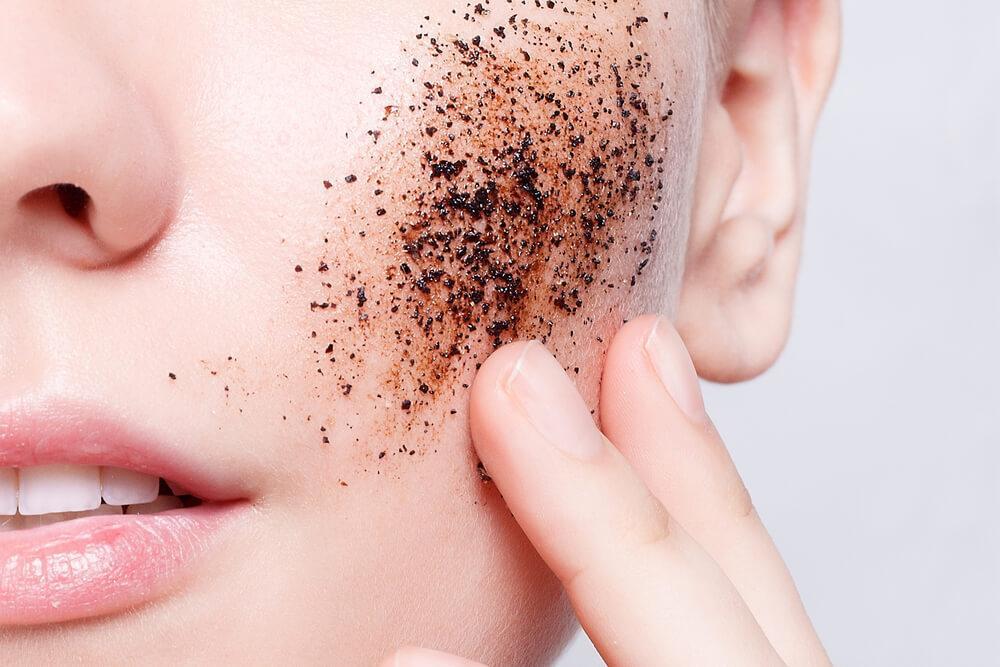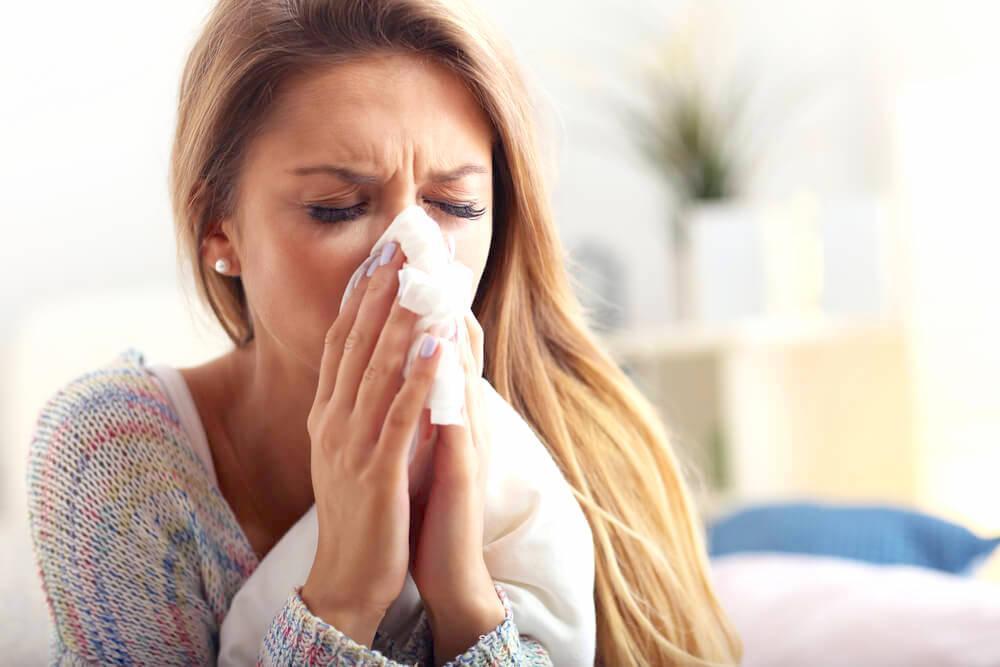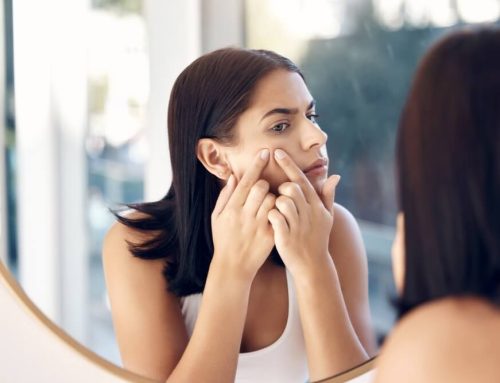You likely adapt your wardrobe to suit the seasons, but do you do this with your skin care too?
Spring is an important season for your skin, as these are the months during which it recovers from the harshness of winter, while preparing itself for the onslaught of heat in the summer. To help it to do this to the best of its ability, here are some tips that you should be following.
Try Water-Based Products
The majority of skin care products out there will either be water-based or oil-based.
In the colder months, oil-based products are fantastic. These usually contain silicones, and this, as well as the oil, form a protective layer over the surface of your skin. This is so helpful when it comes to retaining moisture when the air is dry, but, this layer prevents your pores from breathing when the air is humid.
What are the effects on your skin when this happens?
Well, blocked pores lead to pimples and acne, which will be even more the case for those who already have oily skin.
On the other hand, water-based products give your skin the chance to breathe better.
Of course, there is always an exception…
In this case, it would be those who have extremely dry skin. Even though skin naturally produces more oil in the warmer months, those with dry skin may still benefit from an oil-based product.
Increase Your Exfoliation
When it comes to exfoliation, everybody’s skin reacts differently, especially since there are so many different types of exfoliation out there.
However, in general, skin becomes less sensitive in spring, and can tolerate more exfoliation than it could in the winter months.
Wondering why exfoliation is so important?
Because this removes the outer layer of dead skin cells that settle on the surface of the skin, leading to a rough and dull complexion.
Yes, your body does naturally shed these skin cells, but the rate at which it does this slows down with age, which is why exfoliation becomes so necessary for those looking to preserve their youthful complexion.
So, how much should you be exfoliating?
As mentioned above, this depends on your skin. But, if you were exfoliating once a week in the winter, you should be able to increase this to twice a week in the spring.
Don’t forget…
Since exfoliation removes the outermost layer of dead skin cells, this does leave your skin about 45% more sensitive to the sun. For this reason, try to save your exfoliation sessions for the evening, when you will not be spending any time underneath direct sunlight.
Want an even deeper cleanse?
Give a chemical peel a try, as spring is the perfect season for this type of skin rejuvenation.
Use an Eye Cream
Not only will you be spending more time outdoors in the spring, but the extra sunlight will no doubt have you squinting quite a bit.
When it comes to the skin around your eyes, squinting is something that you should really try to avoid.
Why?
Because this repetitive movement causes fine lines and wrinkles to form around the eyes, with these becoming more pronounced with age. This is due to the fact that collagen and elastin levels decline with age, meaning that your skin will not be able to bounce back into its smooth state in the same way that it used to.
Never purchased an eye cream before?
Here are a few beneficial ingredients that you should look for:
- Hyaluronic acid – draws moisture from the air into the skin
- Ceramides – help to maintain skin hydration
- Retinol – one of the most potent anti-aging ingredients out there
- Vitamin C – helps to boost natural collagen and elastin production
- Vitamin E – soothes and protects the skin
An eye cream is something that you can use both morning as well as night. This is a product that, when applied underneath your makeup, will help your concealer or any other cosmetic products to glide on much more smoothly, while preventing product from building up in fine lines.
Do your eyes feel extra tired in the mornings?
Try storing your eye cream in the fridge. When you apply this, the cool temperature will help to soothe your skin, constricting blood vessels and therefore reducing any puffiness or dark circles.
Sunscreen is Always Necessary
Sunscreen is something that you should be using throughout the year, but you will likely be spending more time outdoors in the spring, and even more so in the summer, making this the perfect time to develop the habit of regularly applying sunscreen.
How often should you be applying sunscreen?
Once in the morning before you leave the house, and then every two hours after that.
The months of spring are also quite a high-risk time for sunburns and other types of sun damage.
Why?
Because even though the sun is strong, temperatures are still quite mild, so many do not realize quite how much damage is being caused to their skin.
Wondering which SPF rating to go for?
SPF 30 is usually enough, so long as you are re-applying this every couple of hours, especially if you have been sweating or swimming. For those who have sensitive skin, you may want to opt for SPF 50 on your face, as this will give you a little bit of extra protection.
Not only do you need to remember to actually wear sunscreen, but you also need to ensure that you are wearing enough.
Do you know how much sunscreen you should be using?
Well, in order to achieve the SPF rating printed on the bottle, you need, in theory, two milligrams of sunscreen per square centimeter of skin.
In practice, this means about a shot glass worth of sunscreen, or two tablespoons, for your face and body. If you are only applying it on your face, go for an amount about the size of a nickel. This may seem like too much, but this is what your skin requires in order to stay protected.
Even if your makeup contains SPF…
You should still be using a dedicated sunscreen too. Cosmetic products usually contain an SPF of about 15, and even if you can find one with SPF 30, you will likely not be using enough of the product to actually give your skin this level of protection.
UV-Protecting Clothing and Accessories
Did you know that clothing, just like sunscreen, can have a UV protection rating?
While this is referred to as SPF with sunscreen, it is called UPF, known as ultraviolet protection factor, for clothing.
As you can imagine, the higher this rating, the better.
For example, a standard white t-shirt will have an average UPF of around 7, whereas a fabric that has a UPF of 50 will protect you from 98% of the sun’s rays.
There are many stylish designs out there that feature a UPF, and a quick browse will no doubt reward you with pieces that you will be excited to wear.
In addition to your clothing, you should also ensure that your accessories are giving you some extra sun protection.
A broad-rimmed hat will protect your face and scalp from the sun, and will work much better than a baseball cap. Sunglasses are also essential, and wrap-around styles will provide you with more protection than other designs, as they prevent the sun from entering into your skin from the sides as well as the front.
Stay Ahead of Spring Allergies
Allergies are extremely common during the months of spring.
Why?
Because this is the time during which trees and other plants release tiny little grains of pollen into the air. When these are breathed in by someone who has allergies, it sends the immune system into overdrive, as the immune system sees the pollen as a threat and releases antibodies to fight it.
These antibodies that are released include a group of chemicals known as histamines, and this is what leads to everything from itchy, puffy eyes to runny noses.
What does this mean for your skin?
Everything from large eye bags to exacerbated wrinkles to itching and burning sensations.
Pollen can travel for miles, meaning even if you live in an extremely built up area, you will still be at risk for spring allergies.
So, what can you do about this?
Fortunately, quite a few things…
To begin with, speak to your doctor about preventative medications, such as non-sedating antihistamines, as these can often be taken in the morning to prevent allergy flare-ups during the course of the day.
If you would rather try a few natural approaches, rather than medications, here are some options:
- A saline rinse in the nose, each day, can significantly reduce nasal congestion
- Fish oil supplements can lower levels of a specific chemical that contribute to allergic reactions
- A wide-brimmed hat and sunglasses will not only protect your eyes and nose from the pollen, but will also protect your skin from the sun
- Butterbur is a herb known for reducing pollen allergies
- Save your outdoor time for dusk rather than morning, as the mornings are when trees first begin releasing their pollen, with the air being extremely thick with this by midday, and then dying down after
- Change your clothes as soon as you enter the house, so that you do not end up bringing pollen in with you
- Invest in some new air filters for your air conditioning, as well as your car
Prevent Eczema Flare-Ups
Eczema is a skin condition that is surprisingly common, with up to 10% of adults experiencing this.
Eczema commonly flares up in the springtime, so, just like with spring allergies, it is important to stay one step ahead, since prevention is so much better than cure.
If you are prone to eczema, you likely already have creams and medications for this, but there are some natural remedies that you can try at the start of spring to help reduce the frequency and severity of flare-ups:
- Run yourself a bath with either colloidal oatmeal or Epsom salts
- The consumption of turmeric has been proven to reduce skin inflammation, making it effective when tackling eczema and psoriasis
- Certain plant oils, such as olive oil, are packed with omega-3 fatty acids, which reduces inflammation and softens the skin
Make the Most of Spring’s Seasonal Produce
Did you know that the food that you eat has a direct impact on the health of your skin?
Even if you already eat quite healthily, eating seasonal produce is something else that you should keep in mind.
Why?
Because these foods contain all of the nutrients that your skin, and body, needs in order to thrive during the season.
Here are a few examples:
- Arugula – high in vitamins A and K, both of which are essential for skin health, especially the delicate skin around your eyes
- Asparagus – another fantastic source of vitamin K, as well as many other skin-boosting minerals
- Carrots – packed with vitamin A and other antioxidants, carrots are known for being an effective anti-aging food
- Peas – naturally anti-inflammatory, and have a high concentration of vitamins and minerals due to the fact that they grow in just a few weeks
- Strawberries – one of the top five antioxidant-rich fruits out there
- Spring onions – contain compounds that protect against oxidative stress, which is one of the main causes of skin aging
- Radishes – help to detoxify the skin and body
Spring is a season of rejuvenation and fresh starts, and it is important for your skin to experience all of this as well. From switching to lighter skin care products to nourishing your skin from within with seasonal produce, all of these tips will really help your skin, as well as the rest of your body, to thrive this spring.










Leave A Comment